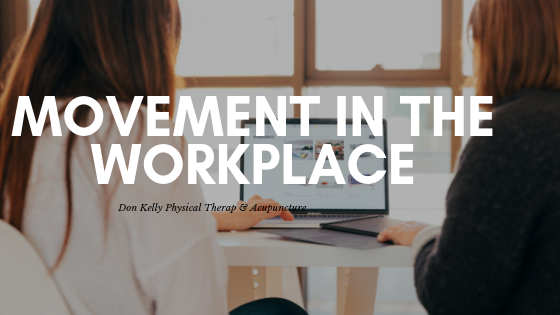A common misconception is that so long as you move outside of work, there are no detrimental effects to your body by sitting all day. This is a half truth. While keeping yourself generally fit and active is good for your health, it won’t prevent you from being exposed to many of the other risks associated with a sedentary job.
Sedentary lifestyles increase all causes of mortality, double the risk of cardiovascular diseases, diabetes, and obesity, and increase the risks of colon cancer, high blood pressure, osteoporosis, lipid disorders, depression and anxiety.
The recommendation is for every 30 minutes you sit at work, you should be moving for at least 2 of them.
1. Just because it’s an office job, doesn’t mean it’s a sitting job
The goal is to break up the cycle of sitting and standing regularly with short bursts of walking in between.
Organise stretching sessions. These can be as short as 15 minutes but gives everyone the opportunity to relieve muscular aches and pains in a group environment so you don’t feel silly! If this isn’t an option, find a colleague or two to form an exercise gang with. Have a giggle and play along with the rest of your office when they make fun of you.
There’s nothing like having a friend or two aiming for the same goals. Not only is there safety in numbers, it also places commitment on the task with the fear of letting the other person down. Get a resistance band or weights and place them on your desk. This not only means you can exercise while reading an email, they’ll also serve as a good reminder to do your exercises.
2. Use activity to combat fatigue
Inertia feeds fatigue. Break this downward spiral. Research has proven that those who are more active have better quality sleep, therefore making them more alert during the day. Move communal devices such as printers and scanners to a shared central location so that staff need to move.
3. Multi-task: Listen to your body while keeping productivity.
Mild pain is actually good pain if you listen to it! Pain is your body’s tool for communicating to you that you need to change something or address an issue. The problem arises if you ignore your body’s prompts and your pain becomes actual damage. Use your computer or a phone to set alarms, reminding you to move. Utilise your standing desk. Ask a colleague to nag you if you have been sitting down for too long.
4. Set realistic goals
Set yourself “SMART” goals: Specific – Measurable – Achievable – Realistic – Timely These are bite-sized goals. So rather than aiming for the ideal which may seem a long way off just now, aim for a short term goal such as: Standing from your desk for 2 minutes every hour for the next week.
5. Put your mental health first
Last, but by no means least, look after your mental wellbeing. This impacts every part of your life. Regardless of where your stresses are, you will take them to work or home with you. A problem shared is a problem halved. Find someone you can speak to about your concerns. Start by identifying what is the biggest stressor in your life. Write things down. This can often help you to establish how to go about addressing it. Learn to say no. If life is getting too busy, it’s ok to admit this. Confront stressful situations. It may be helpful to take a step back initially, but ongoing stressful situations that are not confronted will only become more stressful. Find a suitable environment to discuss the stress, make sure you are open to listening. It may feel awkward at first, but afterwards you’ll only end up feeling better for it. If it’s not possible to manage the situation on your own, don’t be afraid to seek help from a manager or HR. They can often provide advice on how to go about approaching these difficult conversations.


